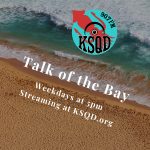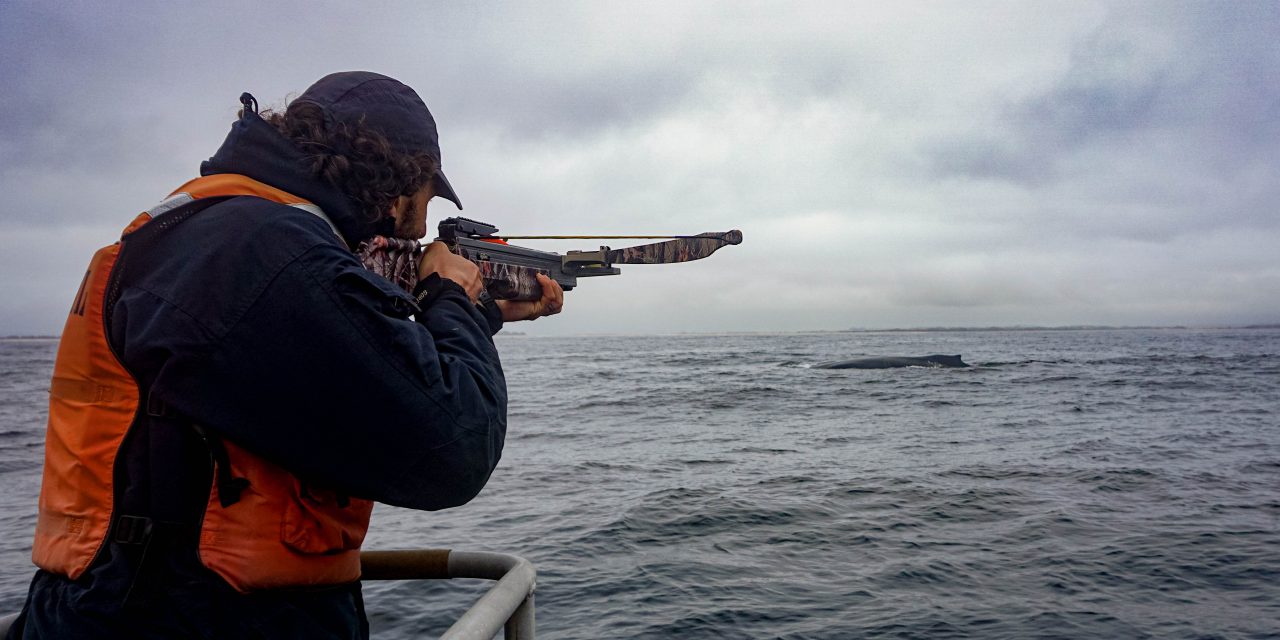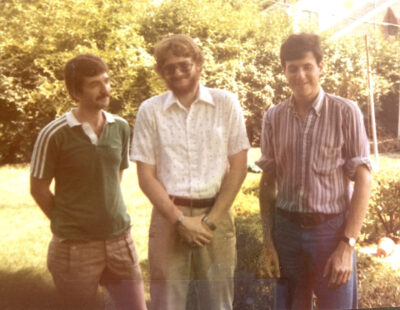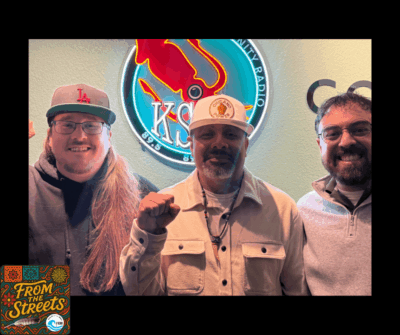
Although the man in the photo by reporter, Cypress Hansen appears to be hunting a whale with a crossbow, UCSC marine sciences post-doc Ryan Reisinger is actually about to collect a sample of blubber to study whale stress hormones. When shipping and recreational boat traffic hushed during the Covid lockdown, scientists seized the opportunity to study how ocean noise effects whales. How did this ocean quiet help scientists learn more about stress in whales? Cypress Hansen, a recent graduate of UCSC’s Science Communications program has this story.
Traffic and whales
(Human traffic noise)
Traffic noise can be pretty annoying. But what about the rumbling of engines…in the ocean? What does it sound like beneath all of our boats? And is anyone down there annoyed?
Studies show that whales, which are social animals, stress out when human sounds get in the way of their conversations. These disruptions can isolate them from other whales, prevent them from finding food, and make communication more costly. But with constant boat traffic criss-crossing the oceans, it’s tough to measure just how much these noisy activities affect the whale-being of these animals.
The coronavirus shutdown, however, provided a quiet respite — and an excellent research opportunity for scientists in Monterey Bay.
Cypress Hansen has the story.
(Sound of boat engine)
CH: It’s early morning in May and a cold fog hangs low above the water. Ari Friedlander kicks the engine of a twenty foot inflatable boat into gear for the final day of whale hunting season.
AF: There’s a whale ahead of us, (whale spout) right side. (engine revs)
CH: Ari is hunting humpbacks whales in Monterey Bay so he can collect a tiny sample of their blubber. He’s a researcher at the institute of marine sciences at UC Santa Cruz, and he wants to get a read on how stressed out these whales are. Their blubber contains all sorts of hormones that reflect how much physiological stress they’ve experienced during the past few weeks.
RR: So, I’m just taking out the crossbow bolts…
CH: That’s Ryan Reisinger, one of the post-docs in Ari’s lab. He’s the marksman for the day while Ari drives the boat.
RR: The way we collect samples is to have a small stainless steel tube, basically, with a cutting edge, which we fire into the tissue of the whale using a crossbow. And it collects a small plug of skin and blubber.
CH: As Ari homes in on the surfacing whale, Ryan stands on a pulpit hanging over the front of the boat, he brings the crosshairs to his eye, waiting for the perfect moment between the five foot swells.
(Sound of whale surfacing, Ryan calling out, and crossbow)
CH: It’s a hit. The foam-wrapped bolt bounces off the whale and bobs towards the boat. Ari plucks it from the water and transfers the small white tube of fat, no larger than a pen cap, from the tip of the bolt into a vial.
AF: Good shot Ry. Good persistence!
CH: This spring, Ari and his lab collected samples from around fifty humpback whales in Monterey Bay. They plan to compare the levels of stress hormones in these samples with another batch of blubber that they collected this time last year at the start of the global shutdown.
Music VK Mendl by https://app.sessions.blue/browse/track/40249 Blue Dot Sessions
CH: In spring of 2020, human activity had fallen silent in response to the pandemic. This meant there were practically no boats on the water for months on end. No boats meant less noise that the whales had to talk over. There was a level of silence that hasn’t occurred in decades.
AF: We thought that this was a really unique opportunity for us to try and measure the impact that changes in human activities have on the stress levels in whales. We just noticed that there was so much less human activity. And we had some colleagues that have listening devices in the bay and it was just a quiet environment, everything looked different, everything sounded different.
(Hydrophone noises)
CH: These sounds you’re hearing come from those listening devices Ari is referring to, called hydrophones, which are constantly recording the sounds of the sea in Monterey Bay.
(Continue with hydrophone noise)
AF: The underwater soundscape of Monterey Bay, I would say, first and foremost is probably pretty complex. It’s not this sort of void or desert that you probably think an ocean sounds like.
CH: There are a lot of interesting natural sounds out there, such as whale songs, (sound) dolphin clicks, (sound) and crustacean pops, (sound). But on top of that,
AF: it’s a major recreation area, so there are a lot of sounds that are human produced.
CH: Such as large shipping containers, (sound) commercial fishing and whale watching boats…(sound)
AF: …and pleasure craft that probably sound more like mosquitoes. (sound)
Music Roadside Bunkhouse by https://app.sessions.blue/browse/track/43330, Blue Dot Sessions
CH: There’s plenty of research on the effects of anthropogenic, or human produced noise, on whales, and what’s typically found is that they have to increase the energy of their calls…
AF: …which means talking louder for us. And that takes more energy to do. And so for animals that don’t have grocery stores or taquerias where you can get food wherever you want, energy is a real commodity.
CH: Spending extra energy on communication results in higher stress because it takes away from other activities, such as foraging, fighting off disease, migrating, or raising young.
In addition to analyzing the whales’ stress levels, Ari will compare the underwater sound environment during the shutdown with what it sounds like this year, now that shipping, business, and recreation are back in full swing. His colleagues at the Monterey Bay Aquarium Research Institute and the National Marine Sanctuary have loads of recordings from nearly every hour of every day.
AF: And we’ll be able to link the amount of sound in the environment to those levels and show how changes in our behavior affect those animals.
CH: So exciting
AF: Oh it’s awesome. It’s totally rad. And I’m not a physiologist, right? I’m an ecologist, I’m interested in how animals relate to their environment, and how animals behave as things change around them. And this is an extension of that, but it was too good of an opportunity not to try and be part of.
CH: Ultimately, Ari hopes this project will provide a tangible and measurable description of how whales respond to our noisy presence, and if they can relax in our absence. Understanding just how resilient or sensitive these animals are could help regulators, and even boat engineers, work to ensure that humans and whales can coexist long into the future. For now, the scientists are just glad they had the quiet time during the shutdown to compare with the usually busy soundscape of Monterey Bay.
(Hydrophone noises)
CH: From the UCSC Science Communication program, I’m Cypress Hansen.
Double check this.
Is pulpit the boating term for this?
Possibly play these sounds in line with the narration if I can get them












